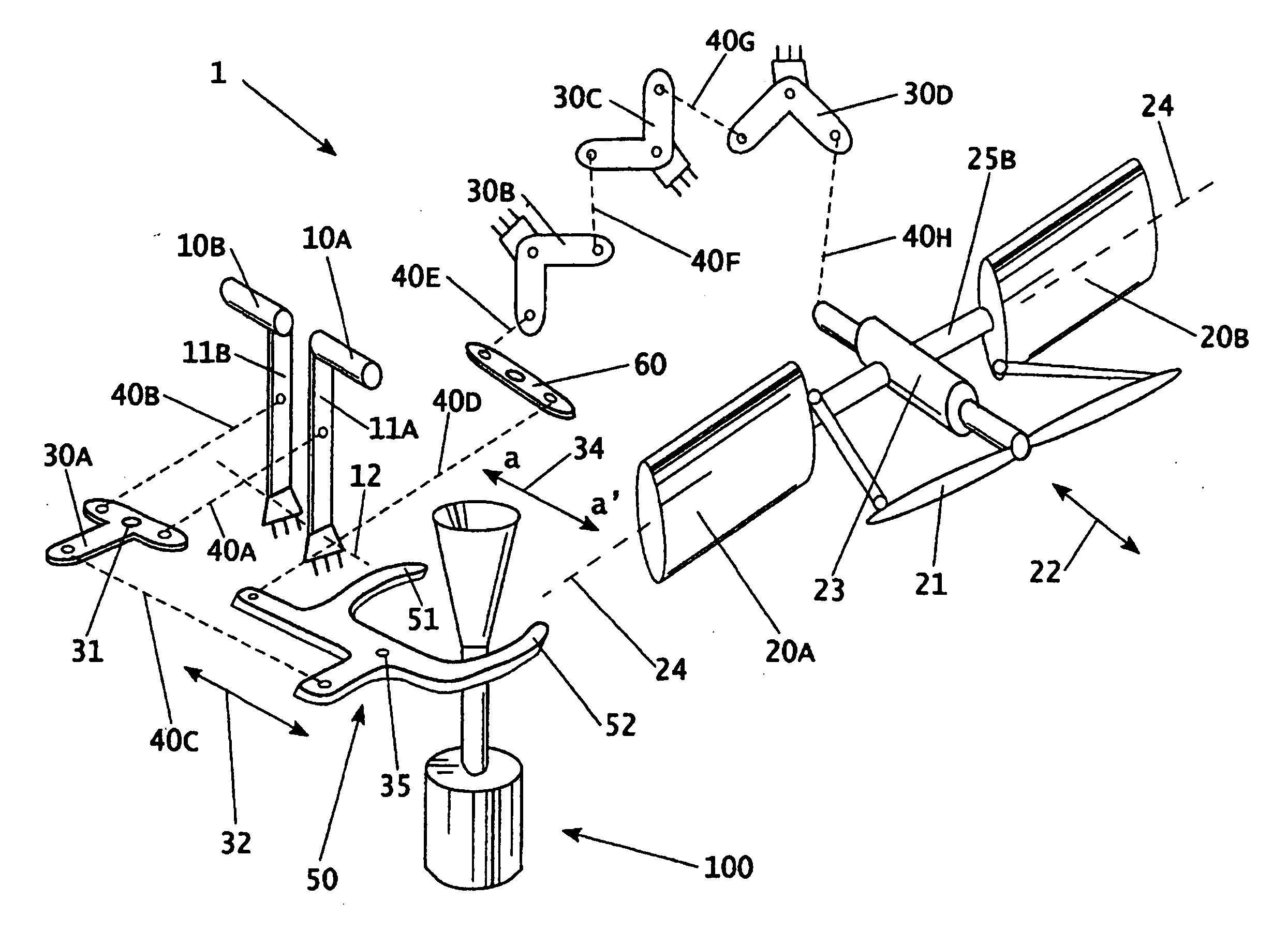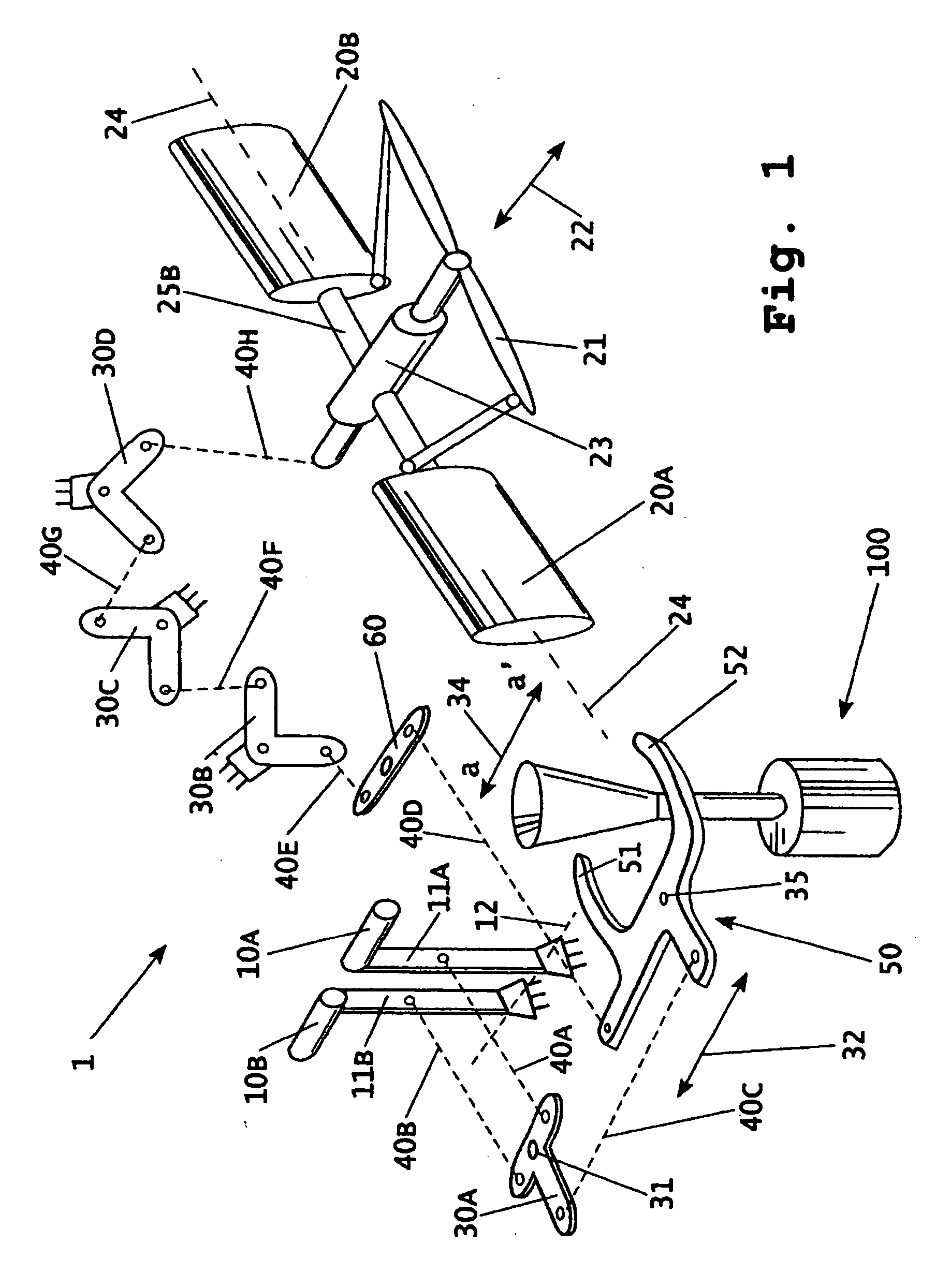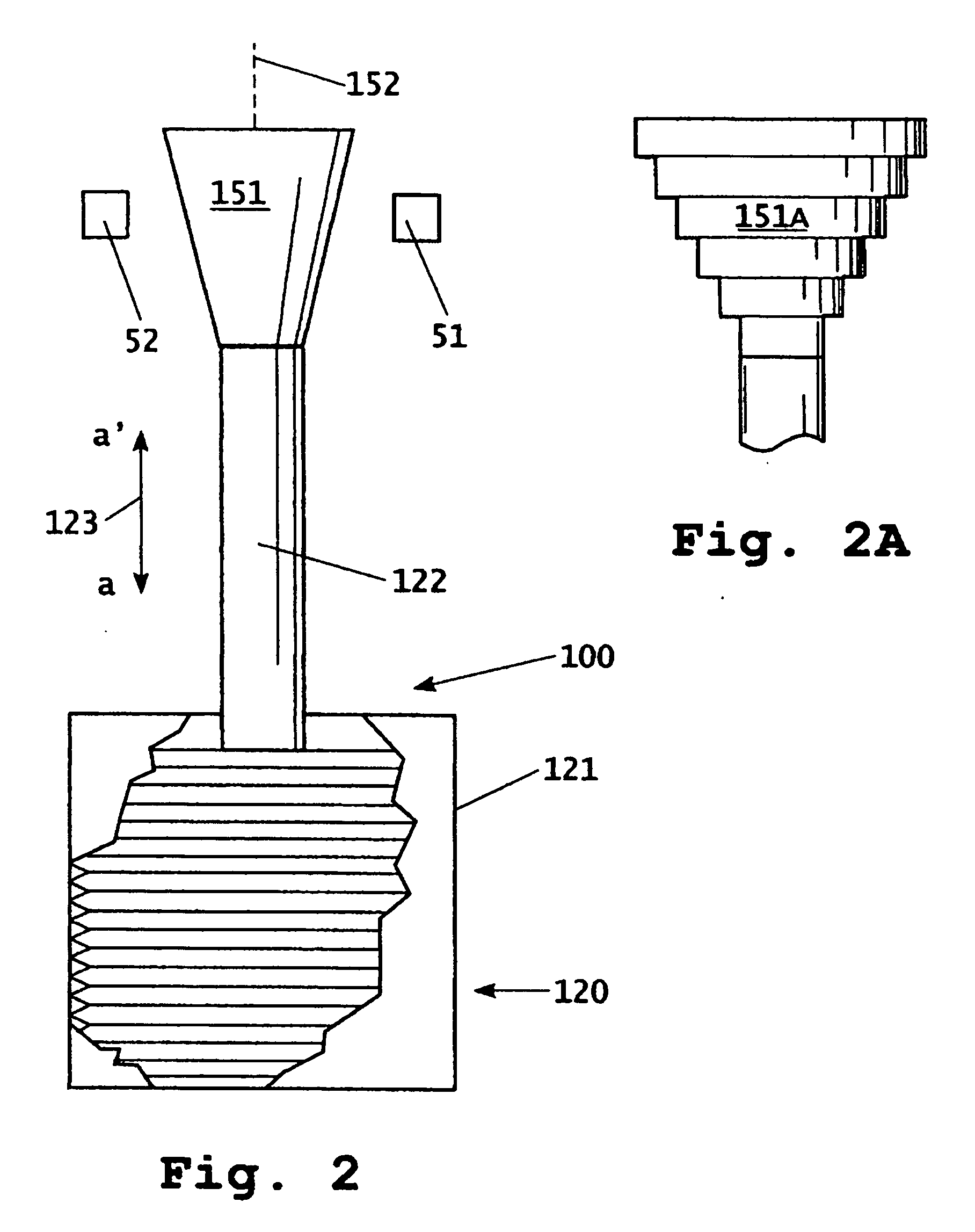Mechanical density altitude compensation device for helicopter tail rotors
- Summary
- Abstract
- Description
- Claims
- Application Information
AI Technical Summary
Benefits of technology
Problems solved by technology
Method used
Image
Examples
Embodiment Construction
[0029] In FIG. 1, helicopter tail rotor pitch-range control mechanism 1 contains a helicopter tail rotor pitch-change control system that includes control pedals 10A and 10B and a series of linkage members that communicate with rotors 20A and 20B. Pedals 10A and 10B are mounted on cranks 11A and 11B, respectively. When pedals 10A and 10B are depressed, cranks 11A and 11B move about axis 12, actuating a series of linkage members that move lever 21 inwardly or outwardly in the direction shown by double-headed arrow 22. Lever 21 connects to rotor hubs 25A and 25B or directly to rotors 20A and 20B. The inward and outward movement of lever 21 causes rotor hubs 25A and 25B to rotate about axis 24, thereby changing the pitch of rotors 20A and 20B. As shown, the linkage members within the helicopter tail rotor pitch-change control system also include components such as linkage members 30A-D and 60, linkage member 50, and push / pull tubes 40A-H. However, the type and arrangement of the variou...
PUM
 Login to View More
Login to View More Abstract
Description
Claims
Application Information
 Login to View More
Login to View More - R&D
- Intellectual Property
- Life Sciences
- Materials
- Tech Scout
- Unparalleled Data Quality
- Higher Quality Content
- 60% Fewer Hallucinations
Browse by: Latest US Patents, China's latest patents, Technical Efficacy Thesaurus, Application Domain, Technology Topic, Popular Technical Reports.
© 2025 PatSnap. All rights reserved.Legal|Privacy policy|Modern Slavery Act Transparency Statement|Sitemap|About US| Contact US: help@patsnap.com



